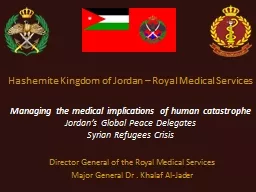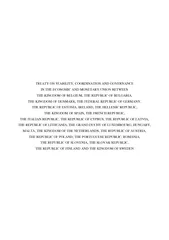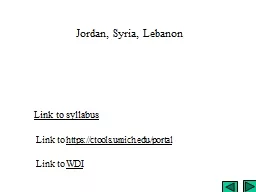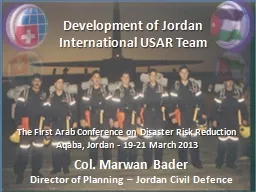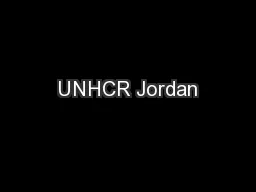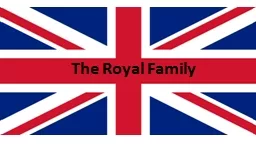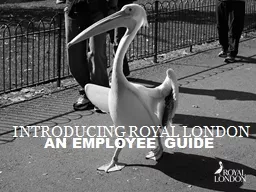PPT-Hashemite Kingdom of Jordan – Royal Medical Services
Author : test | Published Date : 2018-09-23
Managing the medical implications of human catastrophe Jordans Global Peace Delegates Syrian Refugees Crisis Director General of the Royal Medical Services Major
Presentation Embed Code
Download Presentation
Download Presentation The PPT/PDF document "Hashemite Kingdom of Jordan – Royal Me..." is the property of its rightful owner. Permission is granted to download and print the materials on this website for personal, non-commercial use only, and to display it on your personal computer provided you do not modify the materials and that you retain all copyright notices contained in the materials. By downloading content from our website, you accept the terms of this agreement.
Hashemite Kingdom of Jordan – Royal Medical Services: Transcript
Download Rules Of Document
"Hashemite Kingdom of Jordan – Royal Medical Services"The content belongs to its owner. You may download and print it for personal use, without modification, and keep all copyright notices. By downloading, you agree to these terms.
Related Documents

